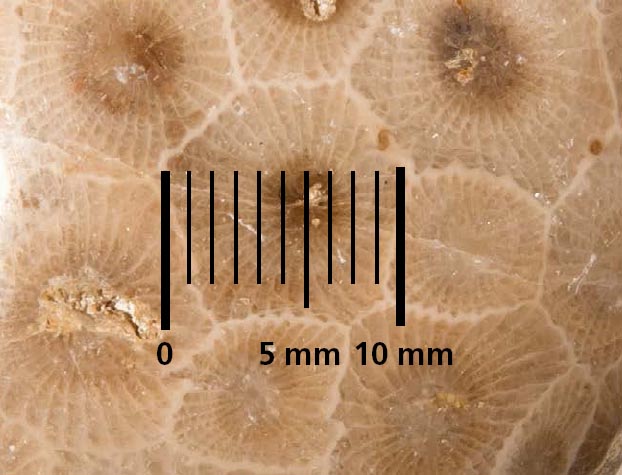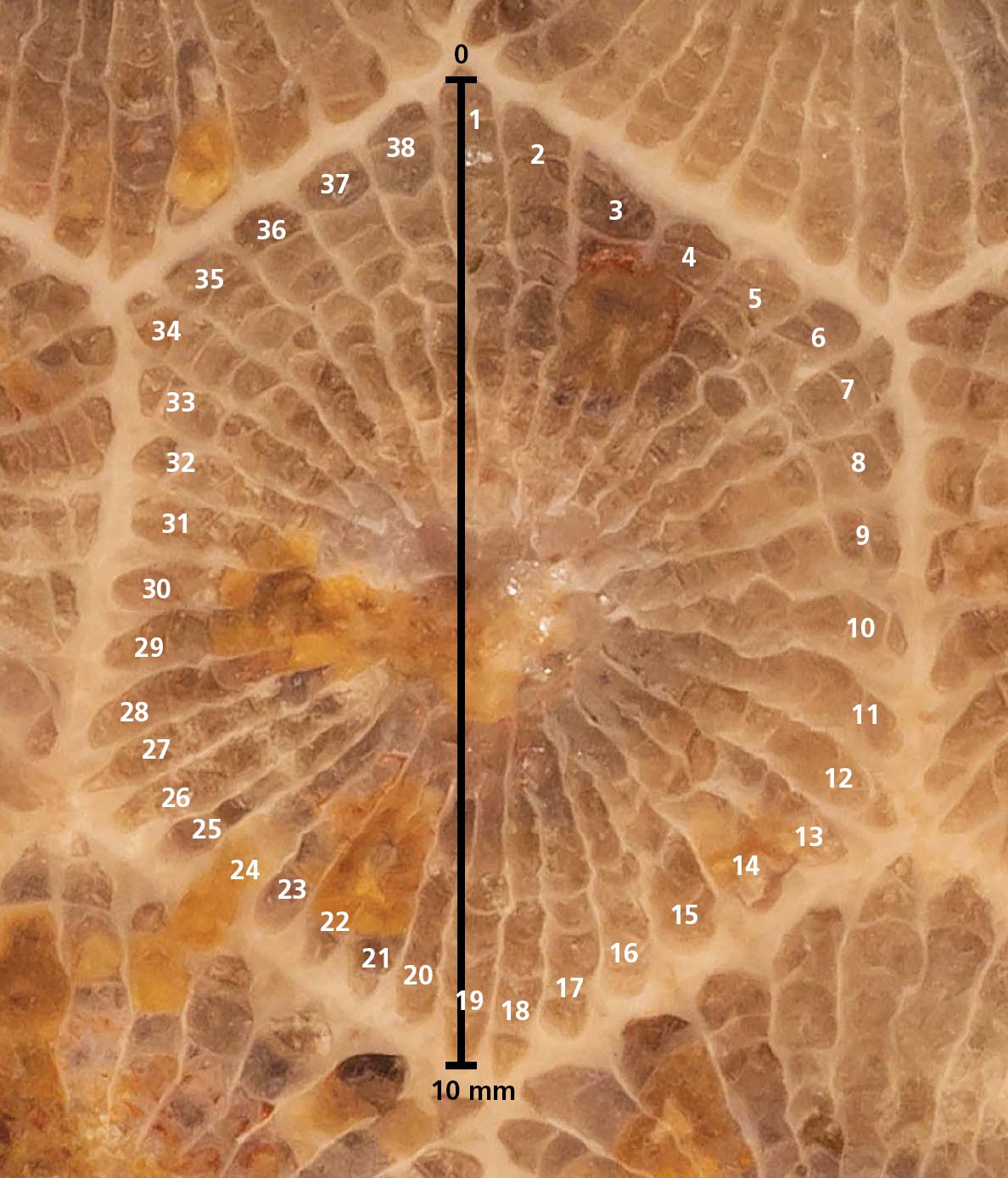
Die-hard Petoskey collectors, however, insist that “true” Petoskey stones contain only percarinata. If you’re deadset on conclusively identifying your find as H. percarinata, it’s a tricky task. To identify an individual species, collectors need to measure the average size of the corallites (in millimeters) and count the average number of septa in each individual corallite.
The list below details the 10 species of Hexagonaria present in Michigan’s Traverse Group of Devonian rocks and their typical corallite sizes and number of septa. Note: There are overlaps between multiple species; for this reason, Hexagonaria species are difficult to identify definitively without in-depth research. In addition, weathered or water-rounded specimens can be difficult to examine for detail. Other distinguishing characteristics (e.g. septa wall thickness) are even more difficult for novices to observe and research. With that said, the information below will at least give you a fighting chance to identify your find by species.
Hexagonaria (abbreviated as H.) species in Michigan’s Devonian rocks, organized by average corallite size (in millimeters)
| H. alpenensis | 2–6 mm | 26–28 septa | ||
| H. potterensis | 4–15 mm | 36–38 septa | ||
| H. fusiformis | 6–10 mm | 34–38 septa | ||
| H. subcarinata | 8–12 mm | 30–34 septa | ||
| H. attenuate | 8–14 mm | 30–38 septa | ||
| H. percarinata | 10 mm | 38–40 septa | ||
| H. anna | 12–16 mm | 32–44 septa | ||
| H. profunda | 13–15 mm | 38–42 septa | ||
| H. cristata | 16–20 mm | 36–44 septa | ||
| H. mirabilis | NA | NA |
None of the various Hexagonaria species in Michigan are more common than Hexagonaria percarinata, the “true” Petoskey stone coral. Therefore, when finding a specimen, it will be safe to assume that it probably contains the species determined to be the one in the state stone. But if you want to confirm this, you can measure the corallites and count their septa, as discussed on the previous page.
The corallite size of Hexagonaria species has been documented in detail and is key to distinguishing them. When looking at the hexagons in a Petoskey stone, you’ll notice that most are close to the same size. By carefully measuring several corallites at their widest point in millimeters and then averaging them, you can begin to narrow down which species you’ve found. Then, with the help of good magnification, you can count the septa—the ray-like segments—in several corallites and find the average of that number too. (This is most easily done in polished specimens with very clear patterns.) With these two pieces of information, consult the chart on the previous page to see which species you may have.
H. percarinata has 10 mm corallites with 38 to 40 septa, which may seem very exact and distinctive, but because of the similarities and overlap in these traits with other species’ ranges, H. percarinata actually shares its measurements with at least two other species. But aside from the abundance of H. percarinata, it also has a very regular, even corallite size with little variation, both of which are traits that can further help identify it.
Specimen courtesy of Dean Montour

This close-up shows an idealized H. percarinata corallite. It is almost exactly 10 mm at its widest point and contains exactly 38 septa, numbered above. This specimen can be safely assumed to be a “true” Petoskey stone.